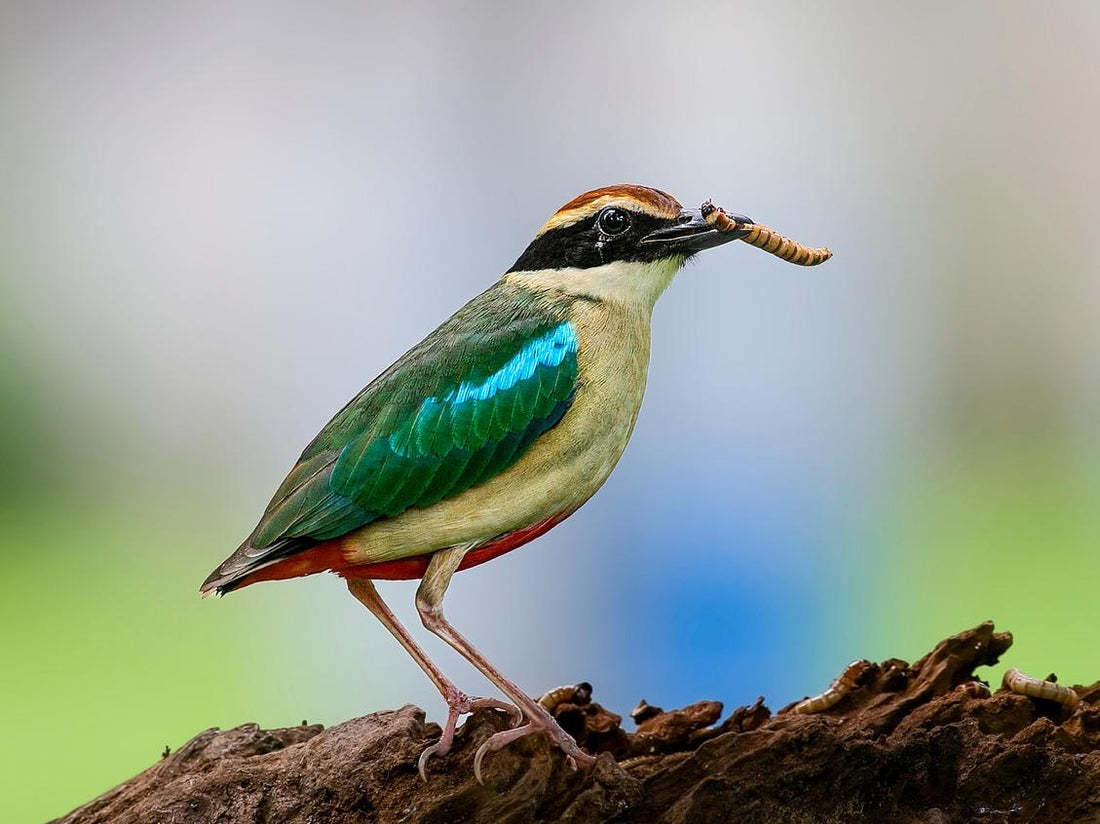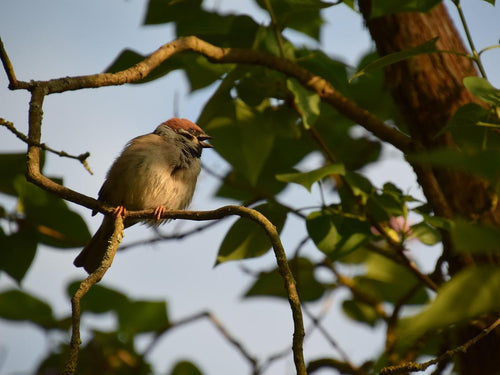What Do Birds Eat? A Complete Guide to Bird Diets by Species and Habitat
TTNatureTeam
Birds eat just about anything. They spend most of their day pecking at the ground and eating. If you sit and watch birds out of your window, you might begin to wonder what they eat.
Unfortunately, the answer isn't super straightforward as each bird species is different. What a bird eats completely depends on the species, their environment, and the season. Still, we can dive into this topic with ease.
Keep reading to learn about what birds eat, including examples from specific bird species.
What Are General Things Birds Eat?
Before we get into the specific examples, let's list out the general items a bird will eat. Birds are mostly opportunistic feeders, meaning they eat what is readily available instead of hunting live, fresh food each time.
Birds mostly eat insects, seeds, plants, small mammals, other birds, eggs, and more. However, this entirely depends on the region. Even the same bird species that live in different states have varying diets.
Does Environment Play a Role?
Region and environment play a huge role in bird feeding habits. For instance, bird species that live near coastal water, like pelicans, have a fish-heavy diet as this is readily available.
Songbirds that live in urban centers like New York City or Boston are more likely to consume insects, seeds, and vegetation instead of fish.
What about birds that migrate for food? Well, hummingbirds travel thousands of miles for blooming flowers and nectar.
Diet By Bird Species

To not generalize bird species as there are thousands of distinct ones, we've broken down what common bird species mainly eat below.
● Robins
Starting with one of the more common birds, we have robins that eat just about anything. They are all across North America and flock in groups, although they hunt for food independently.
American robins eat insects like earthworms during warmer months as they are more readily available. However, during winter, they fly around and look for fruits to sustain themselves. When one area is done, they fly to the next in search of more berries.
● Ravens
Next, we have ravens, which consume very different things compared to robins. They have larger beaks and bodies, allowing them to tackle larger prey.
While ravens also eat fruit and insects like American robins, they also eat small mammals and nesting birds. They are also known to scavenge and, as opportunistic eaters, consume carrion.
● Owls
Owls also have a wider range of food options compared to American robins. They are opportunistic, but are also excellent nocturnal hunters.
With their sharp talons and keen sight, owls eat beetles, rodents, and small to large birds. The exact prey depends on the species, as there is a big difference between a small snowy owl and a larger great grey owl.
Although not picky, owls are carnivorous, meaning you won't find them spending their time looking for berries or plants to eat.
● Finches
Finches are very different from owls. They are almost the opposite, meaning the bulk of their diet isn't meat, but instead seeds. This is probably why many of the birds you see in your yard feasting from a bird feeder are finches.
The seeds they eat include sunflower, dandelion, peanut, safflower, and cedar. Apart from seeds, they also eat vegetation, insects, and fruits.
● Sparrows
Sparrows are omnivorous, meaning they eat both plant and animal-based foods. They have a super wide range of food, and also commonly visit bird feeders in yards.
You can find sparrows eating insects, seeds, and fruits. Some of their favorites are corn, wheat, and thistle seeds.
● Woodpeckers
Woodpeckers have a very different diet compared to other birds. Although not impossible, it's unlikely you'll see one eating seeds at a bird feeder. Instead, woodpeckers, like their name suggests, peck wood to find insects.
Some woodpecker species eat more seeds and fruits than others, although all species can.
● Ducks
It's easy to forget that ducks are birds. While they have wings and fly, they are nothing like the small songbirds we see in our yards eating at the bird feeder.
Ducks are omnivores and have a varied diet. They can eat anything from aquatic vegetation to fish. They can also eat insects, snails, and slugs, making them a perfect pet for gardeners dealing with snails.
● Eagles
Lastly, there are eagles, although there are thousands of more bird species we could talk about. Eagles, though, are unique and, like owls, excellent hunters. They use their agility, eyesight, and strength to eat small mammals, birds, and fish.
Although they do eat small mammals and birds, almost 90% of an eagle's diet is made up of fish. This is why they nest and live so close to bodies of water.
What Do Birds Drink?

How can we talk about what birds eat without also discussing what they drink? These thirsty animals need something to keep themselves hydrated. Unsurprisingly, birds mainly drink water. However, some bird species, like hummingbirds, drink nectar.
If you're looking to attract birds to your yard, consider including a bird bath. This gives them a place to drink, bathe, and rest during hot sunny days.
What Should You Add To Bird Feeders?
Bird feeders are a bit complicated. It isn't enough to just buy the first packet of bird seeds at your local pet store. You first have to consider what kinda birds you want to attract to your home.
For instance, not all birds will eat sunflowers. However, if you want to see more cardinals, you'll need to include sunflowers or peanuts in your birdfeeder.
Some birds don't eat out of regular bird feeders that use gravity. Instead, birds like woodpeckers, chickadees, and jays prefer suet feeders. It's a feeder with a cage and a vertical platform for birds to eat and hang onto.
Other birds prefer fruit. For birds like catbirds, tanagers, and orioles, you'll need an oriole feeder that allows you to add fruits and jellies.
Hummingbirds also have different needs and drink mostly nectar, not seeds. A nectar feeder is necessary to bring them in.
Conclusion
All in all, it's impossible to list every single thing a bird will eat in a paragraph or less. There are over 11,000 species of birds, each with their own varied and unique diet. For instance, eagles mainly consume fish while hummingbirds drink nectar and eat insects.




